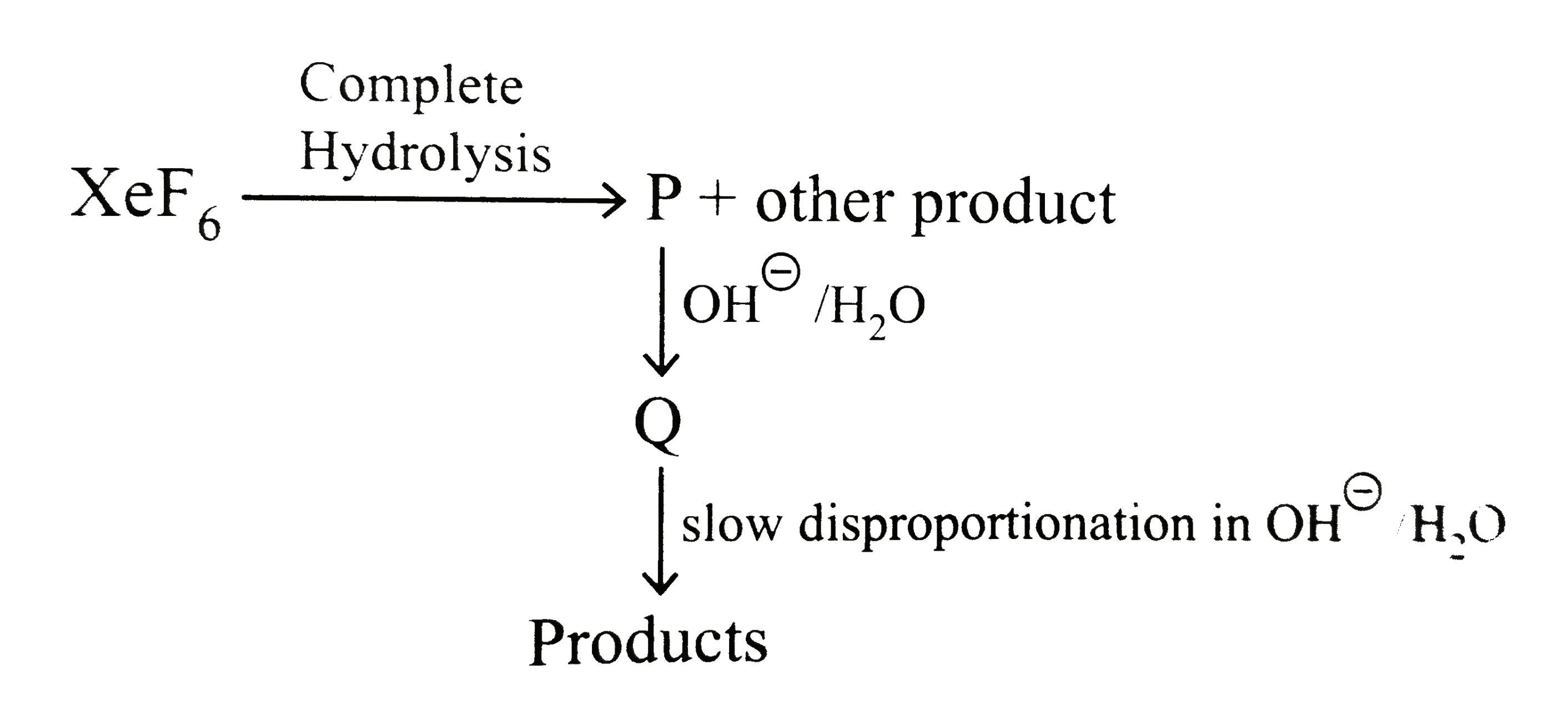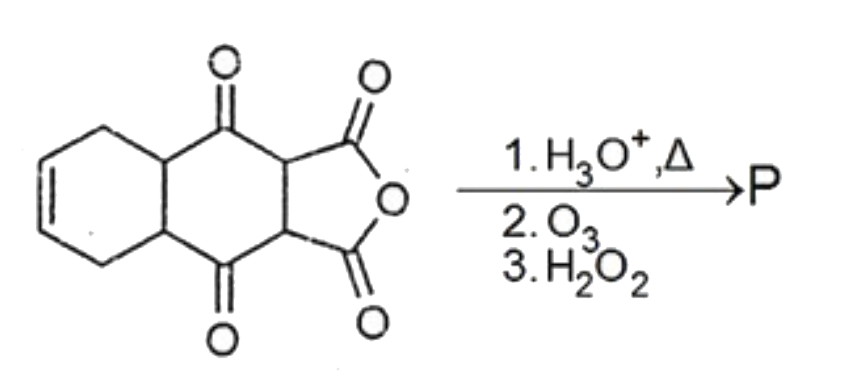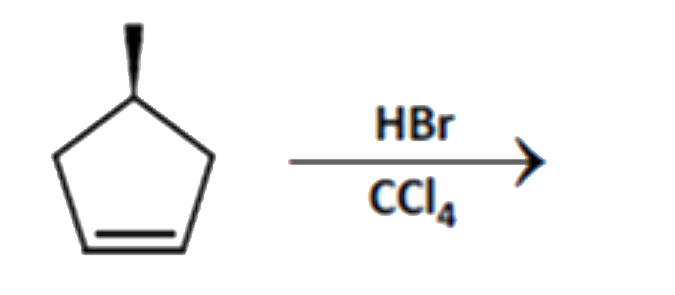The total number of halogenated products likely to be formed by ethance is:
4
6
9
8
The correct Answer is:C
To determine the total number of halogenated products likely to be formed by ethane (C2H6), we will analyze the process of chlorination step by step.
Step 1: Understand the Structure of Ethane
Ethane has the molecular formula C2H6, which can be represented as:
CH3−CH3
Step 2: Monochlorination
In monochlorination, one hydrogen atom from ethane is replaced by a chlorine atom. This can occur at either of the two carbon atoms, leading to:
1. CH3-CH2Cl (Chloroethane)
2. CH2Cl-CH3 (Chloroethane)
Both products are identical, so we count this as one unique product.
Step 3: Dichlorination
In dichlorination, two hydrogen atoms are replaced by chlorine atoms. The possible products are:
1. CH3-CHCl2 (1,1-Dichloroethane)
2. CH2Cl-CH2Cl (1,2-Dichloroethane)
3. CHCl2-CH3 (1,2-Dichloroethane)
Here, we have three unique products.
Step 4: Trichlorination
In trichlorination, three hydrogen atoms are replaced by chlorine atoms. The possible products are:
1. CHCl3-CH3 (1,1,1-Trichloroethane)
2. CH2Cl-CHCl2 (1,1,2-Trichloroethane)
3. CHCl2-CH2Cl (1,2,2-Trichloroethane)
This gives us three unique products.
Step 5: Tetrachlorination
In tetrachlorination, four hydrogen atoms are replaced by chlorine atoms. The possible products are:
1. CCl4-CH3 (1,1,1,1-Tetrachloroethane)
2. CHCl3-CHCl (1,1,1,2-Tetrachloroethane)
This results in two unique products.
Step 6: Pentachlorination
In pentachlorination, five hydrogen atoms are replaced by chlorine atoms. The only possible product is:
1. CCl5-CH3 (1,1,1,1,2-Pentachloroethane)
This results in one unique product.
Step 7: Hexachlorination
In hexachlorination, all hydrogen atoms are replaced by chlorine atoms, leading to:
1. C2Cl6 (Hexachloroethane)
This results in one unique product.
Step 8: Count All Unique Products
Now, let's summarize the unique products from each step:
- Monochlorination: 1 product
- Dichlorination: 3 products
- Trichlorination: 3 products
- Tetrachlorination: 2 products
- Pentachlorination: 1 product
- Hexachlorination: 1 product
Adding these together gives:
1+3+3+2+1+1=11 unique products
Conclusion
The total number of halogenated products likely to be formed by ethane is 11.
Ethane has the molecular formula C2H6, which can be represented as:
CH3−CH3
In monochlorination, one hydrogen atom from ethane is replaced by a chlorine atom. This can occur at either of the two carbon atoms, leading to:
1. CH3-CH2Cl (Chloroethane)
2. CH2Cl-CH3 (Chloroethane)
In dichlorination, two hydrogen atoms are replaced by chlorine atoms. The possible products are:
1. CH3-CHCl2 (1,1-Dichloroethane)
2. CH2Cl-CH2Cl (1,2-Dichloroethane)
3. CHCl2-CH3 (1,2-Dichloroethane)
In trichlorination, three hydrogen atoms are replaced by chlorine atoms. The possible products are:
1. CHCl3-CH3 (1,1,1-Trichloroethane)
2. CH2Cl-CHCl2 (1,1,2-Trichloroethane)
3. CHCl2-CH2Cl (1,2,2-Trichloroethane)
In tetrachlorination, four hydrogen atoms are replaced by chlorine atoms. The possible products are:
1. CCl4-CH3 (1,1,1,1-Tetrachloroethane)
2. CHCl3-CHCl (1,1,1,2-Tetrachloroethane)
In pentachlorination, five hydrogen atoms are replaced by chlorine atoms. The only possible product is:
1. CCl5-CH3 (1,1,1,1,2-Pentachloroethane)
In hexachlorination, all hydrogen atoms are replaced by chlorine atoms, leading to:
1. C2Cl6 (Hexachloroethane)
Now, let's summarize the unique products from each step:
- Monochlorination: 1 product
- Dichlorination: 3 products
- Trichlorination: 3 products
- Tetrachlorination: 2 products
- Pentachlorination: 1 product
- Hexachlorination: 1 product
1+3+3+2+1+1=11 unique products
The total number of halogenated products likely to be formed by ethane is 11.
Topper's Solved these Questions
- ISOMERISMBOOK - CENGAGE CHEMISTRY ENGLISHCHAPTER - ISOMERISMEXERCISE - Single correct answer type (Exercise)
65 Videos
- ISOMERISMBOOK - CENGAGE CHEMISTRY ENGLISHCHAPTER - ISOMERISMEXERCISE - Assertion-Reasoning Type (Exercise)
5 Videos
- ISOMERISMBOOK - CENGAGE CHEMISTRY ENGLISHCHAPTER - ISOMERISMEXERCISE - Multiple choice questions (Exercise)
38 Videos
- IONIC EQUILIBRIUMBOOK - CENGAGE CHEMISTRY ENGLISHCHAPTER - IONIC EQUILIBRIUMEXERCISE - Archives Subjective
28 Videos
- NCERT BASED EXERCISEBOOK - CENGAGE CHEMISTRY ENGLISHCHAPTER - NCERT BASED EXERCISEEXERCISE - Chemical Equilibrium
73 Videos
Similar Questions
Find the total number of monohalogenated products including stereoisomers for R.

View Solution
The total number of isomeric products (including stereomers ) formed at the end of the reaction is :
View Solution Total number of monochloro structure products
Total number of monochloro structure products
View SolutionUnder ambient condition , the total number of gases released products in the final step of the reaction scheme shown below is

View SolutionThe total number of optically inactive products obtained from the complete ozonolysis of the compound given below here is

View SolutionTotal number of hydrogen molecules required to form ethane from ethyne is
View SolutionUnder ambient condition , the total number of gases released as products in the final step of the reaction scheme shown below is

View SolutionThe total number of carboxylic acid groups in the product P is

View SolutionState giving reasons what products are likely to be formed in the bromination of benzoic acid.
View SolutionFind the total number of feasible products (including stereoisomers) in the following reaction. (No carbocation rearrangements is observed)

View Solution
